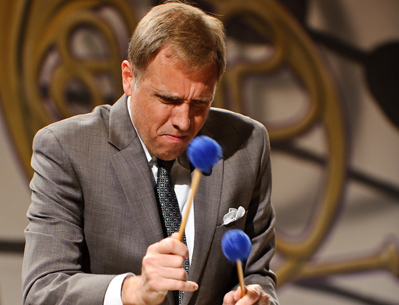Dec 9, 2025 12:28 PM
In Memoriam: Gordon Goodwin, 1954–2025
Gordon Goodwin, an award-winning saxophonist, pianist, bandleader, composer and arranger, died Dec. 8 in Los Angeles.…
Craft Recordings kicked off a 70th anniversary celebration for the Contemporary Records imprint back in December, issuing a set of pristine, digital-only compilations of music from the likes of Art Pepper, André Previn, Barney Kessel, Hampton Hawes, Shelly Manne and saxophonists Ben Webster, Sonny Rollins, Benny Golson, Harold Land and Teddy Edwards. Now, the label has turned its attention to the two Ornette Coleman recordings on Contemporary: Something Else!!!!: The Music Of Ornette Coleman, and Tomorrow Is The Question!: The New Music Of Ornette Coleman from 1958 and 1959, respectively.
They have been packaged as a two-LP box set on 180-gram vinyl, newly mastered by Bernie Grundman. Both records feature the amazing tandem of Coleman on alto saxophone and Don Cherry on trumpet. Something Else!!!! has Walter Norris on piano, Don Payne on bass and Billy Higgins on drums. Tomorrow Is The Question! has Percy Heath and Red Mitchell on bass, with Shelly Manne on drums. They document an artist going from a jazz outsider to becoming the toast of New York.
“These two recordings are the accessible gateway to Ornette Coleman’s music,” said Nick Phillips, the producer of Genesis Of Genius. “He’s expanding on the bebop vocabulary and at this point he’s using traditional forms for most compositions, 12-bar blues and AABA song form, but doing something totally different. With Ornette and Don Cherry’s trumpet in the front line, the way they play and phrase and shift rhythms together, it sounds very loose but very tight.”
The gateway to Coleman’s fame was opened by Lester Koenig (1917–’77), the founder of Contemporary, who welcomed the alto saxophonist and his unorthodox approach when many in Los Angeles ran. Koenig was an intellectual who loved the arts. He was blacklisted from the film industry when he was called to testify before the House Un-American Activities Committee, an offshoot of McCarthyism of the day.
He originally created Contemporary as an outlet for contemporary classical works, but opened his ears, and the label, to jazz, earning a reputation for having faith in artistic creativity. Coleman was the beneficiary of that faith. It launched him from relative obscurity to jazz stardom.
This history and more is detailed beautifully in the expanded 32-page booklet adeptly handled by Grammy-winning jazz historian Ashley Kahn, peppered with some terrific archival photography. DB

Goodwin was one of the most acclaimed, successful and influential jazz musicians of his generation.
Dec 9, 2025 12:28 PM
Gordon Goodwin, an award-winning saxophonist, pianist, bandleader, composer and arranger, died Dec. 8 in Los Angeles.…

Belá Fleck during an interview with Fredrika Whitfield on CNN.
Jan 13, 2026 2:09 PM
The fallout from the renaming of the John F. Kennedy Center for the Performing Arts to include President Donald…

Flea has returned to his first instrument — the trumpet — and assembled a dream band of jazz musicians to record a new album.
Dec 2, 2025 2:01 AM
After a nearly five-decade career as one of his generation’s defining rock bassists, Flea has returned to his first…

Dec 11, 2025 11:00 AM
DownBeat presents a complete list of the 4-, 4½- and 5-star albums from 2025 in one convenient package. It’s a great…

Vibraphonist Chuck Redd found himself in the midst of a political firestorm after canceling his gig Dec. 24 at the newly renamed Trump Kennedy Center.
Jan 6, 2026 2:32 AM
The Board of Trustees at Washington, D.C.’s Kennedy Center for the Performing Arts voted on Dec. 18 to rename the…